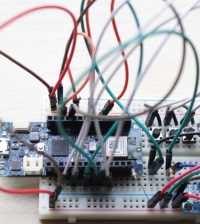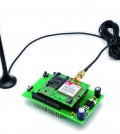- makeITcircular 2024 content launched – Part of Maker Faire Rome 2024Posted 2 weeks ago
- Application For Maker Faire Rome 2024: Deadline June 20thPosted 2 months ago
- Building a 3D Digital Clock with ArduinoPosted 7 months ago
- Creating a controller for Minecraft with realistic body movements using ArduinoPosted 7 months ago
- Snowflake with ArduinoPosted 8 months ago
- Holographic Christmas TreePosted 8 months ago
- Segstick: Build Your Own Self-Balancing Vehicle in Just 2 Days with ArduinoPosted 8 months ago
- ZSWatch: An Open-Source Smartwatch Project Based on the Zephyr Operating SystemPosted 9 months ago
- What is IoT and which devices to usePosted 9 months ago
- Maker Faire Rome Unveils Thrilling “Padel Smash Future” Pavilion for Sports EnthusiastsPosted 10 months ago
Open and DIY vs bureaucracies and certifications: obstacles and warranties

The CEB Press – Liberator – built in italy. This machine is able to produce bricks from soil.
The pleasure and passion to start a new project from an almost casual intuition, to create a new prototype, and then make it better and eventually available on the market does not always comply with the existing rules and laws in Europe.
My personal experience in building Open Source, DIY Hardware from the Global Village Constructions Set with the Open Source Ecology italian branch, is that we often incurred in certifications issue, self-certification and safety requirements related to the EC quality assurance marks and European standards: those things are not exactly irrelevant.
Unfortunately, I’m not the only one who has faced this kind of safety and certification issues when trying to bring brilliant ideas and projects to life for creativity and innovation: for example, I know that in some places in Europe, regulations related concerns are blocking Fablabs and Makerspaces to be created as well.
The point, therefore, is to understand how much this is really is related to security and how much instead, this problem, is slowing down innovation.
A classic example is that of Arduino UNO, which is CE marked, and that was one of the pioneers in the creation of an open source hardware platform, in addition to being a well-known business case.
In this case, the certifications grants the product quality and it “protects” from certain potential legal drawbacks.

The CE Mark
A different case is for example that of Raspberry Pi: being devoid of CE mark, the second batch of boards produced by was refused by distributors with obvious diatribes regarding legal details. The conclusion? The only way to solve this was to get this blessed certification.
I may refer to other projects and products such as Prusa RepRap or MakerBot but , with this kind of machines, things are not really that dangerous or complicated and an accurate design coupled with common sense can strongly reduce the major risks related for example to short-circuits.
By the way, when you incur in more challenging projects, such as for example when the famous CEB Press from Open Source Ecology things may get tougher!
Directives, standards, labeling and certifications, intricate codes! I can say: you can get lost in this sea of papers and documents.
In these cases, bureaucracy becomes a real impediment: not only is being subject to these rules, but as there’s no lean and clear practice for this, you always fear the rider, the error, the interpretation and you end up living in perpetual doubts. Or you work with a good engineer or certifications consultant (and everything is hyper controlled) or this becomes an ordeal.
[iframe_loader src=”http://player.vimeo.com/video/57424944″ height=”349″ width=”425″ ]
The only real way to bear with this regulatory jungle is to start with the assumption that you want to be certified for your product.
All could be open and we shall really be interested in the philosophy and ethics behind the principles of DIY but we shall really aim to make it easy to get to the CE Mark.
If our goal is to make business then there is no other solution than to think in a canonical way and design shall take few precautions such as not to make our final goal, almost impossible .
Instead of perceiving it as an obstacle I thought these insights could be a good starting point to promote the culture of DIY that is forming and spreading in the US and here in Europe.
I strongly believe that it’s important for us to adapt to this new collaborative, informal, and bottom up methods for creation, to our existing regulatory and cultural way of doing business: we need to deal with this challenge and, once we got it, it will be a serious boost for innovation and change to be pushed the end user market.















